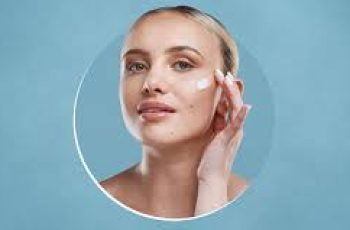
Best Peels for Aging Skin
Facial peels for aging skin have become a cornerstone in anti-aging skincare, offering a powerful means to rejuvenate aging skin by exfoliating the outer layers, thereby stimulating the production of new skin cells and collagen. This blog delves into what I tell my patients about the best facial peels for aging skin, exploring how they work, the types available, their key ingredients, and options for at-home treatments.
Antiaging Peels to Revitalize Aging Skin
Facial peels, a cornerstone in anti-aging skincare, harness the power of exfoliation to remove dead skin cells, paving the way for the regeneration of new cells and restoration of skin collagen. Collagen, a crucial protein for young looking skin, provides structure and strength, which are vital for maintaining a youthful appearance. As we age, collagen production diminishes while breakdown increases, leading to the formation of wrinkles and fine lines. Peels not only stimulate collagen synthesis but also aid in diminishing age spots, resulting in smoother, firmer, and more radiant skin. If you want to have glass skin, peels are a good option to make skin glow. But are they safe? I will discuss what types of peels there are because the benefits, side effects, and safety profile all depends upon what type of peel it is.
Face Peels at Home
While in-office peels offer more dramatic results, there are safe and effective options for at-home use, primarily mid to low pH peels. Home peels, typically formulated with glycolic or lactic acid, come in various forms such as pads, liquids, creams, or masks. It’s essential to follow product instructions carefully to avoid overexfoliation and potential skin damage. Here are some of the best antiaging peels to use at home.
[[T39]]
Types of Peels
The definition of a peel is a method of exfoliation designed to remove the outermost layers of the skin called the stratum corneum. Peeling skin reveals the fresher, younger-looking skin beneath. The skin naturally sheds the outer layer in a process called desquamation, but sometimes it needs exfoliators to help with this process. Peels are one type of exfoliant used to treat aging skin. There are several types of peels that can be used to improve wrinkles and the texture of the skin.
Chemical Peels
Chemical peels utilize specific acidic solutions with a low pH to remove dead skin cells. They range from mild formulas that target the superficial layer of the skin to more potent peels that can reach deeper layers, making them highly effective in treating signs of aging. The mid strength ad deep chemical peels are used as treatments in doctor’s offices, while the mild peel scan be used at home.
Chemical Peel Ingredients
The efficacy of a chemical peel largely depends on its active ingredients, each offering unique benefits for aging skin.
TCA (Trichloroacetic Acid): Ideal for medium-depth peeling, TCA can address moderate wrinkles, texture issues, and pigment irregularities. T his should only by used by trained doctors as it is very dangerous.
Glycolic Acid: A type of alpha hydroxy acid (AHA) known for its small molecule size, allowing deep penetration. It’s effective in stimulating collagen and exfoliating the skin.
Lactic Acid: Derived from milk, lactic acid is gentler than glycolic acid and hydrates the skin while improving texture and pigmentation.
Salicylic Acid: A beta hydroxy acid (BHA) that penetrates deeply into pores, making it effective for age-related skin concerns and sun damage.
Azelaic Acid: Known for its antibacterial and anti-inflammatory properties, azelaic acid is effective in treating rosacea, hyperpigmentation, and improving overall skin texture.
What are enzyme peels
Enzyme Peels
Enzyme peels offer a gentler alternative to chemical peels. An enzyme is a type of protein that speeds up chemical reactions in the body. They can be used to dissolve attachments between skin cells forcing them to “let go of each other” so they can leave the skin’s surface. Fruits are often used as exfoliants because they contain enzymes and acids that can exfoliate or remove dead skin cells. Using fruit enzymes on the skin can make it look fresher and younger.
Papaya contains an enzyme called papain that gently exfoliates the skin. Papaya enzymes can make the skin smoother and brighter.
Pumpkin contains an enzyme called pumpkin enzyme that also exfoliates dead skin cells. Pumpkin enzymes reveal newer and younger looking skin.
Pineapple contains an enzyme called bromelain that removes dead skin cells. This leaves skin looking rejuvenated.
Enzymes provide gentle exfoliation without harsh scrubbing. Removing the top layer of dead skin cells allows newer cells to rise to the surface. The skin appears refreshed and vibrant as a result. Enzymes are gentle enough for daily use. Side effects are mild like temporary redness, stinging, or allergic reactions. When used properly, fruit enzymes like papain, pumpkin enzyme, and bromelain can improve skin tone and texture for a more youthful appearance.
Mechanical Exfoliation
Mechanical exfoliation methods like microdermabrasion, dermaplaning, and exfoliating scrubs physically remove dead skin cells through abrasion. Microdermabrasion uses fine crystals or a diamond tip, while dermaplaning employs a scalpel to scrape off dead skin and vellus hair. Although microdermabrasion and dermaplaning are not usually called “peels” they serve a similar function in increasing exfoliation of the skin.
Retinol Peels
Retinoids are a class of compounds derived from vitamin A, such as the popular ingredient retinol. Retinoids work to exfoliate and peel the skin by increasing cell turnover. (4) They stimulate skin cell renewal and the shedding of old, dead skin cells, revealing the fresher skin underneath. Retinoids also increase expression of growth factors which help accelerate cell regeneration in the skin. This process of enhancing cell turnover and sloughing off the outermost skin allows retinoids to peel the skin. Over time, the peeling effects also work to fade signs of damage from the sun or aging. Consistent use leaves skin looking rejuvenated, youthful and glowing. The increased cell creation and removal helps smooth roughness, stimulate collagen production, clear pores and brighten the complexion.
Benefits of Peels for Aging Skin
Peels do many good things for skin that make it look better and younger. Here are examples of some antiaging benefits:
Remove dead skin cells – Peels exfoliate the outer layer of skin to reveal fresh new skin underneath
Stimulate collagen production – Peels trigger increased collagen production which firms and tightens the skin
Smooth fine lines and wrinkles – By increasing collagen, peels can reduce the appearance of fine lines and wrinkles
Improve skin texture – The exfoliation helps eliminate rough spots and reveal smoother skin
Brighten skin tone – Removing the dull top layer leaves brighter, more even toned skin behind
Clear pores – Peels help dislodge congestion in pores to prevent future breakouts
Reduce acne scars – Over time, peels can fade the look of acne scarring
Correct pigmentation issues – Peels inhibit excess melanin production to lighten brown spots
Minimize enlarged pores – Collagen production tightens pores for a more refined look
Boost hydration and elasticity – Freshly exposed skin better retains moisture and rebounds quicker
side effects of peels for skin aging
Side Effects of Peels
While peels offer many skin rejuvenation benefits, they also come with some potential side effects to be aware of. The chemicals in peels that work to exfoliate skin can in some cases over-exfoliate skin and cause damage in the form of skin burns, inflammation, or post-inflammatory hyperpigmentation. Chemical burns from strong acids like phenol are very likely if used by an inexperienced medical provider, so have caution if you do this in office peel. Working with a well trained board certified dermatologist helps customize the type and depth of peel to avoid negative reactions. When used properly, most patients can undergo peeling treatments with minimal risk or complications. But it’s important to set proper expectations about results, recovery time, and monitor for signs of trouble afterward.
Skincare Routine
Peels will work best on wrinkles if they are part of a customized and complete skincare routine that is designed for your Baumann Skin Type. Take our skin type quiz and we will help you find the right products for your skin type.


